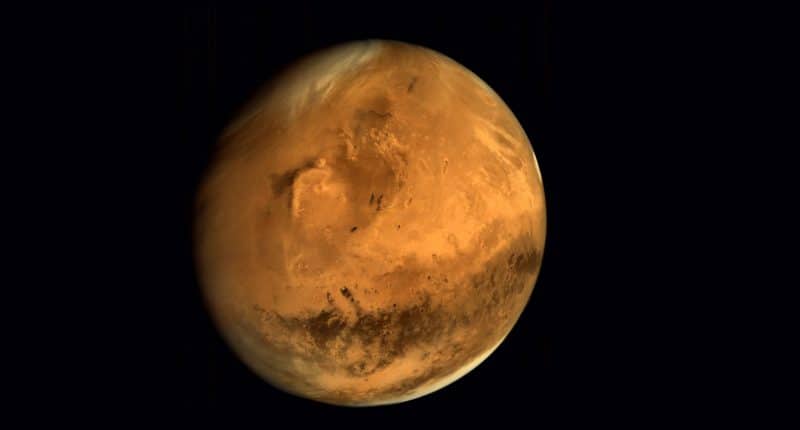Curiosity, the small rover that NASA had sent to Mars to study the Gale Crater (and which has been on the Red Planet for nearly nine years now, ever since it successfully landed back on August 4, 2012), has just sent back images of a rare but beautiful event on the earth’s small neighbour. Shining clouds can be seen in the pictures which have been released by the Agency, showcasing an occurrence that has been brewing over Curiosity’s spot for the past few months, first having been spotted in January.
The clouds are quite akin to those seen regularly here on earth, with shining halos around them created by the reflection of sunlight through ice crystals. What’s so interesting about the clouds on Mars, you ask? The answer is that the Red Planet is not very often a host to such a sighting, primarily due to its extremely thin atmosphere that normally won’t support the large amount of water vapour needed to create clouds.
However, this time around, there’s something even more special (or odd, take your pick). The height of the clouds is much higher than the normal limit of 37 miles above ground for water-ice clouds. This has led scientists to wonder whether the clouds are made of water at all.
You must be thinking, “What else would they be made of?” Well, for a Planet like Mars, which has an atmosphere majorly comprised of carbon dioxide, it might well be a reality that the clouds are in fact made from dry ice (which is basically frozen carbon dioxide). The scientists at NASA are currently studying the images at a closer depth, hoping to gain a better insight into the planet’s sky.
But there’s a glitch in that theory too, it seems. Dry ice requires very low temperatures to form, much lower than ordinary ice. This wouldn’t have been a problem had the clouds been spotted at the coldest time of year, when Mars is as far away from the sun as possible. However, they appeared much earlier than expected, at a time when the temperature on our neighbour is also quite high. Nevertheless, this might help explain the higher-than-normal altitude (higher altitudes, as everyone knows, are colder).
With Curiosity having sent back a number of shots of the clouds from its many cameras, the Agency has concluded that the best clarity was obtained through the navigation cameras (which are black-and-white). But the shine was seen best through the color mast camera.
This news comes even as Ingenuity, the small copter that NASA had sent to Mars in 2020, has completed its sixth flight on the surface of the planet, as of May 28.
Not all was cherry and roses during the flight, though, as the helicopter somehow received incorrect information about where it was flying, presumably due to a mismatch between the timing of receiving images from its navcam (navigation camera), and its flight.
Nevertheless, it eventually landed safely, having covered the remaining 64 meters of its journey. As per a blog post by NASA, this was achieved by a coordinated effort from all of Ingenuity’s other subsystems.
The Tech Portal is published by Blue Box Media Private Limited. Our investors have no influence over our reporting. Read our full Ownership and Funding Disclosure →






